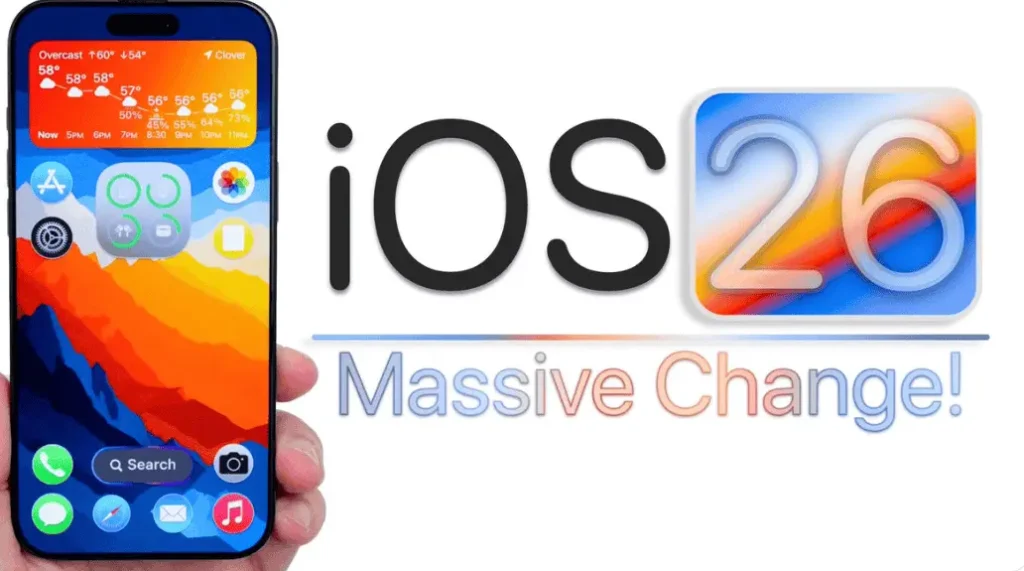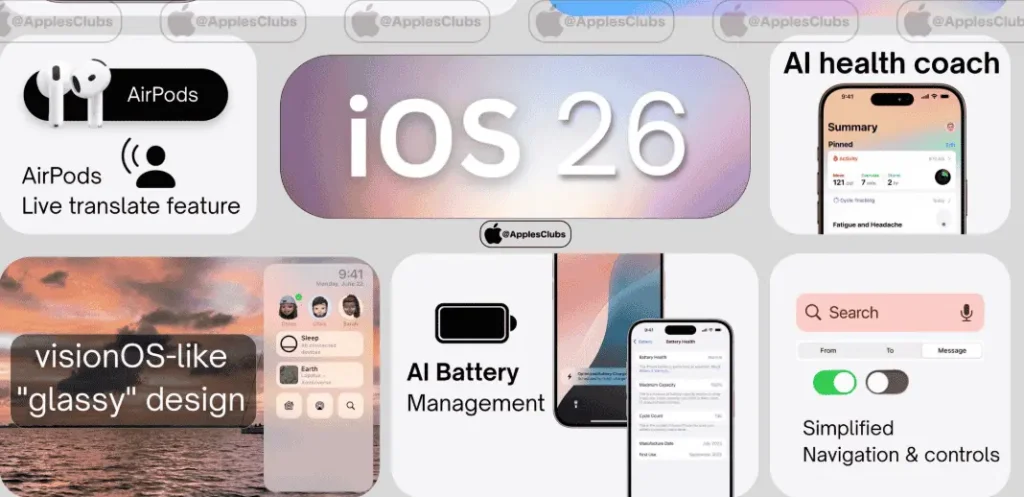Introduction: A New Chapter in Apple’s Software Evolution: iOS 26

Apple is poised to redefine its software landscape with the upcoming release of iOS 26, macOS 26, and watchOS 26. This strategic rebranding marks a significant shift from traditional version numbering to a year-based naming convention, aligning all operating systems with the calendar year. The announcement, anticipated at the Worldwide Developers Conference (WWDC) 2025 scheduled for June 9–13, signals Apple’s commitment to a cohesive and streamlined user experience across its diverse device ecosystem.
Unified Naming Convention: Simplifying the Ecosystem
The transition to a year-based naming system is more than a cosmetic change; it’s a deliberate move to eliminate confusion arising from disparate version numbers across platforms. Previously, users navigated a fragmented landscape with iOS 18, watchOS 12, and visionOS 2. By synchronizing all operating systems under the “26” moniker, Apple aims to present a unified front, enhancing clarity and reinforcing brand consistency .
Design Overhaul Inspired by visionOS
The forthcoming operating systems are expected to feature a comprehensive design overhaul, drawing inspiration from visionOS, the software powering Apple’s Vision Pro headset. Users can anticipate:
- Modernized Icons and Interface Elements: Aesthetic updates that reflect a futuristic and cohesive design language.
- Dynamic Interface Elements: Interactive components that respond intuitively to user inputs.
- Floating Navigation Bars: Streamlined access to essential functions, enhancing usability.
- Enhanced Haptic Interactions: Tactile feedback that enriches the user experience .
These design enhancements aim to create a seamless transition between devices, fostering a more intuitive and engaging environment for users.
Apple Intelligence: Integrating AI Across Platforms
In tandem with the visual redesign, Apple is set to introduce Apple Intelligence, a suite of AI-driven features designed to augment user productivity and device functionality. Key highlights include:
- Revamped Siri: An intelligent assistant capable of understanding context and delivering more accurate responses.
- AI-Powered Battery Optimization: Smart management of power consumption to extend device longevity.
- Advanced Writing Tools: Features that assist in drafting and editing text, enhancing communication efficiency.
- Smart Reply in Mail: Context-aware suggestions for email responses, streamlining correspondence .
These AI integrations underscore Apple’s commitment to leveraging machine learning to enhance user experiences across its product lineup.
How This Move Benefits Users and Developers

Benefits for Users:
- Simplified updates and version tracking
- More intuitive design across devices
- Enhanced performance from AI optimization
Benefits for Developers:
- Unified APIs and SDKs
- Consistent design frameworks
- Cross-platform app compatibility
Cross-Platform Consistency: A Seamless User Experience
The rebranding and redesign efforts are part of a broader strategy to ensure consistency across all Apple devices. By harmonizing the look and feel of iOS, macOS, watchOS, iPadOS, tvOS, and visionOS, Apple seeks to provide users with a familiar and intuitive interface, regardless of the device in use. This uniformity not only simplifies user interaction but also reinforces brand identity and loyalty.
WWDC 2025: Anticipated Announcements
The upcoming WWDC 2025 is expected to serve as the launchpad for these transformative changes. In addition to unveiling the rebranded operating systems, Apple may introduce:
- Mac Pro M4 Ultra: A high-performance desktop catering to professional users.
- AI Smart Glasses: Wearable technology integrating augmented reality features.
- Standalone Gaming App: A dedicated platform for gaming enthusiasts, potentially revitalizing Apple’s presence in the gaming industry .
These announcements will likely underscore Apple’s innovative trajectory and its dedication to enhancing user engagement through cutting-edge technology.
Frequently Asked Questions (FAQs)
What is iOS 26 and how is it different from iOS 18?
iOS 26 is the next major update for iPhones, rebranded to match the release year 2026. It includes a visual overhaul inspired by visionOS and deeper AI integrations through Apple Intelligence, differentiating it from the current iOS 18.
Why did Apple rename all its operating systems to version 26?
Apple chose to align all OS versions with the release year (2026) to create consistency across platforms and simplify the ecosystem. Previously, different OSs had different version numbers, which often confused users and developers.
Will Apple Intelligence be available on all devices?
Apple Intelligence is expected to be available on newer-generation devices that support advanced neural processing. It will enhance Siri, Mail, Notes, and other built-in apps, with a strong emphasis on on-device processing for privacy.
When will iOS 26, macOS 26, and other updates be released?
These updates are expected to be announced at WWDC 2025 (June 9–13) and released in public beta shortly after, with stable versions launching in September 2025 alongside the next iPhone.
What devices will support iOS 26 and macOS 26?
Support is expected for most recent devices, including:
- iPhone 14 and newer
- MacBooks and Macs with Apple Silicon (M1, M2, M3, and upcoming M4)
- Apple Watch Series 7 and later
Official compatibility lists will be shared at WWDC.
Will this affect app development or third-party apps?
Yes. Developers will need to update their apps to align with new UI frameworks and Apple Intelligence tools. However, Apple is expected to provide robust development kits to ease the transition.
Conclusion: Embracing a Unified Future
Apple’s transition to iOS 26, macOS 26, and watchOS 26 represents a pivotal moment in the company’s software evolution. By adopting a year-based naming convention and implementing a comprehensive design overhaul, Apple is not only simplifying its ecosystem but also setting the stage for a more integrated and user-centric future. As the tech community eagerly awaits the official announcements at WWDC 2025, it’s clear that Apple is committed to delivering a cohesive and intelligent user experience across all its devices.
